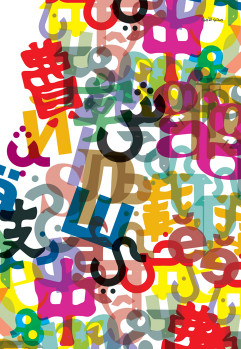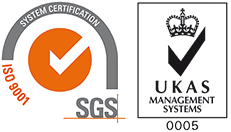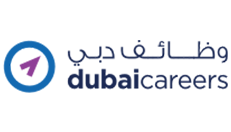THE MULTIPLIER EFFECT
The UNESCO-Pearson Initiative for Literacy has been examining how inclusive digital solutions can help people with low skills and low literacy use technology in a way that supports skills development and, ultimately, improves livelihood.
Regardless of the medium you’re using to read this – magazine, tablet or laptop – you could be forgiven for idly scanning these words, without consciously thinking, and taking such an act for granted. The benefits of literacy can, for many of us, seem so obvious – the increased life chances, economic growth, a sense of progress, cultural diversity and the like – that we actually underestimate its importance.
Incredibly, then, in a world where we can detect gravitational waves that in theory could allow scientists to build a time machine and travel back in time; develop robotic body parts and capture images of a real black hole, the United Nations Educational, Scientific and Cultural Organization (UNESCO) estimates that 758 million adults worldwide – that’s an incredible one in ten of the world’s population – can’t read.
UNESCO has placed global literacy at the heart of its operations since 1946. It states: “Acquiring and improving literacy skills throughout life is an intrinsic part of the right to education. The ‘multiplier effect’ of literacy empowers people, enables them to participate fully in society and contributes to improve livelihoods.”
Project Literacy, a global initiative convened by global digital education company Pearson that aims to eradicate illiteracy by 2030, suggests the economic cost of illiteracy is staggering and that the current estimate of $1.19 trillion could just be “the tip of the iceberg”.
Dan Wagner, UNESCO Chair in Learning and Literacy at the University of Pennsylvania, says: “Literacy is a key component in achieving the UN’s sustainable development goals. Without literacy, each of the 17 goals will be limited by the inability of citizens to be sufficiently informed on key issues, and less empowered to take action. There is a strong argument that tackling illiteracy and low literacy as a ‘foundational’ social problem would pay greater economic dividends than tackling each issue separately.”
In today’s digital world, the spectre of illiteracy presents itself in a new and even more invidious fashion. According to UNESCO, as well as the existing challenges in the physical world, illiterate people in a rapidly digitising world “have difficulties participating in digital realms and accessing services that can strengthen livelihoods and enlarge learning opportunities”.
The digital era may have liberated many and provided a foundation from which individuals are empowered and can flourish, but without basic literacy and numeracy skills, digital literacy is but a forlorn dream for vast swathes of the world’s population.
And it’s not just in countries traditionally considered underdeveloped where this absence of digital literacy is felt. UNESCO points to the fact that in Europe an estimated 20% of adults lack the literacy skills they need to function fully in a modern society.
That’s why, in 2016, it partnered with Pearson – as part of the aforementioned Project Literacy – to roll out the research and advocacy campaign, UNESCOPearson Initiative for Literacy: Improved Livelihoods in a Digital World.
According to UNESCO, the initiative aims to answer the following issues: “How can technology solutions – outside of education – be improved to be more inclusive, accessible and usable for low-skilled, low-literate youth and adults, and those who cannot read or write? How can digital solutions better provide an entry point for this group of people into digital economies, and, in the process, help them further develop their skills? What barriers need to be lowered to best acquire literacy?”
In this light, low literacy should not be a barrier to digital inclusion. UNESCO states that “carefully designed digital solutions can help people navigate digital spaces and benefit from relevant applications”.
UNESCO and Pearson have developed a set of guidelines that will allow today’s digital disruptors and innovators develop more inclusive digital solutions. Says UNESCO: “Establishing digital entry points for people with limited literacy and limited digital skills creates a virtuous cycle that accelerates learning and development, empowering individuals and strengthening communities.”
Since the launch of the initiative a range of case studies – 14 in total – have examined ways in which digital inclusion can alleviate many of the issues already mentioned. Says UNESCO: “Collectively the case studies serve as input into the forthcoming UNESCO guidelines aimed at digital solution providers, implementation and donor agencies, development partners and governments, on how to create more inclusive digital solutions that develops the skills of users and improves their livelihoods in the 21st Century.”
These case studies include an app to improve farming practices in Uganda; an online registration website for Syrian refugees in Turkey; and a maternal health SMS service in India. All fulfil the brief that the developed content must be usable to people who have previously been excluded.
“Literacy is the first step
towards freedom, towards
liberation from social and
economic constraints. It is the
prerequisite for development,
both individual and collective.
It reduces poverty and
inequality, creates wealth, and
helps to eradicate problems of
nutrition and public health”
AUDREY AZOULAY, DIRECTOR GENERAL,
UNESCO
“Users that develop digital skills seek out new and empowering digital solutions and commonly teach others how to use technology, creating a multiplier effect that d rives f urther uptake,” s ays UNESCO. “The guidelines show how a focus on digital inclusion supports literacy development for the 750 million youth and adults currently unable to read or write. They also carry a potential to strengthen livelihoods by fostering the development of new and easy-to-use portals to information and skills development.”
Last September, to mark International Literacy Day, UNESCO’s Director General Audrey Azoulay spoke passionately about the significance of literacy. She said: “Literacy is the first step towards freedom, towards liberation from social and economic constraints. It is the prerequisite for development, both individual and collective. It reduces poverty and inequality, creates wealth, and helps to eradicate problems of nutrition and public health.”
Her organisation’s joint initiative with Pearson is a necessary – and uniquely contemporary – step to achieving these laudable aims.
DIGITAL SOLUTIONS
UNESCO and Pearson’s guidelines call for digital solutions that:
Offer meaningful services that support the development of digital skills and literacy.
Better understand and design solutions for people with low literacy by taking their unique needs and ambitions into account.
Create more engaging content and usable interfaces.
Ensure the implementation environments, in addition to technology and content, support inclusive usage.
Regularly monitor, measure and iteratively improve solutions.








